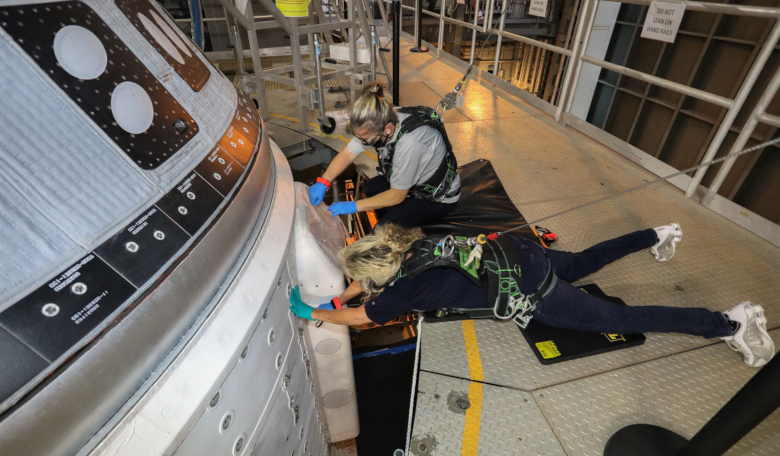Four stuck oxidiser valves means Boeing's troubled Starliner spaceship could be subjected to further delays after the company said Thursday it was still working to solve the on-going problem.
“As Boeing teams continue to work around the clock to return functionality to a number of oxidiser valves on the CST-100 Starliner’s propulsion system, the company is simultaneously working with its NASA and Aerojet Rocketdyne partners to determine the cause of the valve issues discovered during prelaunch checks,” Boeing said in a statement.
The valves in question connect to thrusters that enable abort and in-orbit manoeuvring of Starliner’s service module.
Engineering teams have been able to power on Starliner, which is currently housed in the Vertical Integration Facility (VIF) at the Cape Canaveral Space Force Station in Florida, allowing the vehicle to receive commands.
With direct access to the spacecraft for troubleshooting, Boeing said it has also completed physical inspections and chemical sampling on the exterior of a number of the affected valves, that have so far not revealed any signs of damage or external corrosion.
Nine of the thirteen propulsion valves on Starliner have already been opened and are functioning normally, say Boeing, after electrical and thermal techniques applied to the valves prompted them to open.
However, it looks like the remaining stuck valves could cause Boeing to miss out on another test flight to the International Space Station (ISS) before the current launch window closes later this month.
“Over the past couple of days, our team has taken the necessary time to safely access and test the affected valves, and not let the launch window dictate our pace,” said John Vollmer, Starliner vice president and program manager in a statement.
Starliner was supposed to embark on its Orbital Flight Test-2 mission at the end of July, but the flight was delayed after Russia’s Nauka module ran into trouble soon after docking at the International Space Station (ISS).
The launch was then rescheduled for 3 August but mission managers called it off after 13 of 24 valves inside the spacecraft’s propulsion system did not open as expected during pre-flight testing.
Although “multiple launch opportunities” are being assessed for OFT-2, if Starliner isn’t off the ground by late August, the test flight could be delayed by several months, as other vehicles are lining up to use the launch pad.
These include a SpaceX Cargo Dragon capsule set for launch 28 August and NASA’s robotic science probe Lucy.
Lucy, which is the first-ever mission to explore Trojan asteroids in orbit near Jupiter, is scheduled for liftoff atop a United Launch Alliance Atlas 5 rocket from Cape Canaveral during a 23-day launch period opening 16 October.
Any launch date options for OFT-2 would protect the planetary window for the agency’s Lucy mission, NASA said.











